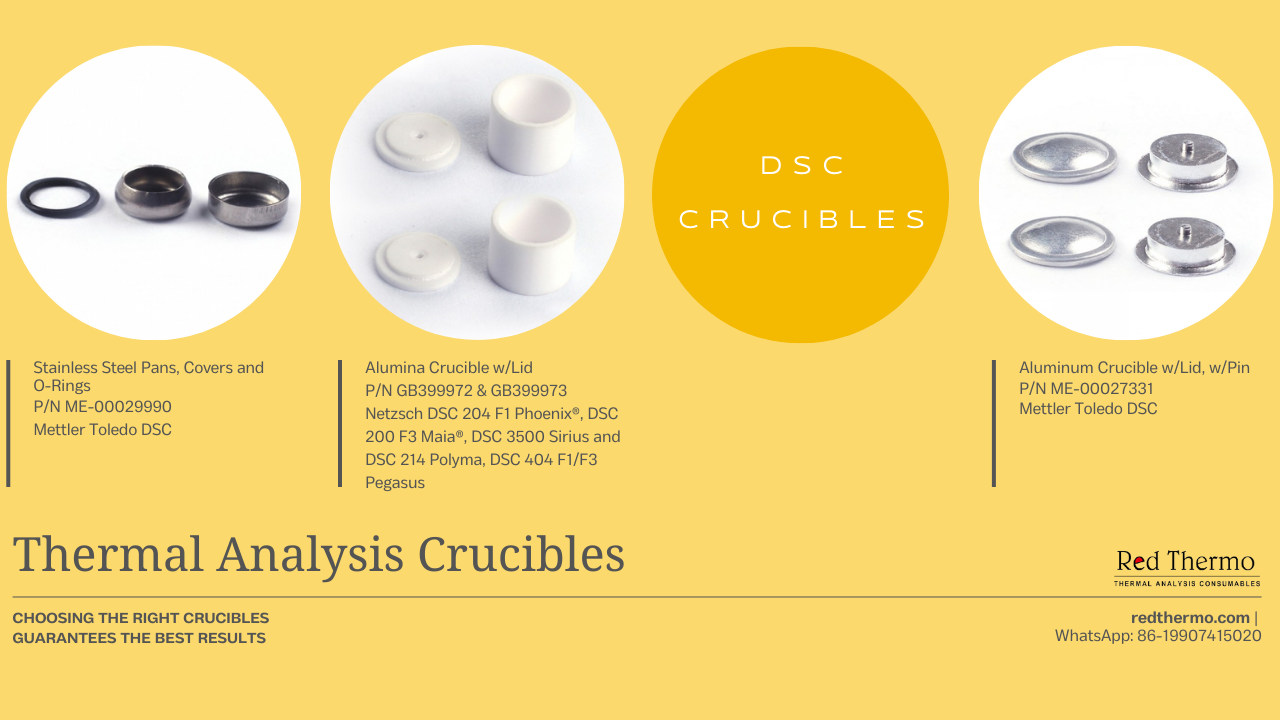Your cart is empty.
shop now
Your cart is empty.
shop now
Reusing thermal analysis crucibles can have several benefits. First, it is cost-effective. Crucibles, especially those made from specialized materials, can be expensive. Reusing them not only saves money but also contributes to reducing waste. Additionally, well-maintained crucibles can yield consistent results over multiple experiments, as they become seasoned and develop a stable surface. This seasoned surface can enhance reproducibility and accuracy, especially in experiments sensitive to small variations.
While reusing crucibles offers advantages, there are also potential drawbacks. Over time, crucibles can accumulate residue from previous experiments, leading to contamination and affecting the accuracy of results. Despite cleaning efforts, some residue may remain, impacting the baseline and interfering with subsequent experiments. Furthermore, some experiments require an inert atmosphere, and reusing crucibles might introduce unwanted reactions due to traces of previously used materials.

Discarding crucibles after each experiment has its merits. Firstly, it eliminates the risk of contamination from previous experiments. This is crucial for sensitive analyses where even trace amounts of foreign substances can skew results. Moreover, using new crucibles ensures a consistent starting point for every experiment, reducing variables and enhancing data reliability. For experiments involving reactive materials or stringent purity requirements, using fresh crucibles is often the preferred practice.
However, discarding crucibles after every experiment can be resource-intensive and generate more waste. This approach increases costs associated with procuring new crucibles, especially for experiments requiring specialized materials. Additionally, the learning curve associated with using new crucibles can lead to experimental variations as researchers adjust to the nuances of different crucible batches.
To gain deeper insights into the reuse vs. discard debate, we reached out to Dr. Emily Carter, a materials science expert with years of experience in thermal analysis. According to Dr. Carter, the decision depends on the nature of the experiment and the materials involved. For routine experiments where high accuracy is not essential, reusing crucibles with proper cleaning can be suitable. On the other hand, for critical experiments demanding impeccable precision, opting for fresh crucibles is advisable.
Yes, but it's essential to thoroughly clean crucibles between uses to prevent cross-contamination.
Cleaning methods vary based on the material residue. Consult the crucible manufacturer's guidelines for the best approach.
Experiments involving trace analysis, reactive substances, or high-purity requirements often necessitate discarding crucibles.
Yes, residue from previous experiments can impact baseline measurements, leading to inaccurate results.
Regularly discarding crucibles can contribute to increased waste generation and resource consumption.
Some experiments use disposable crucibles made from materials like alumina, reducing the need for reuse and cleaning.
In the realm of thermal analysis, the decision of whether to reuse or discard crucibles after each experiment is not one-size-fits-all. It depends on factors such as experiment type, material sensitivity, and desired accuracy. Reusing crucibles can save costs and resources while introducing the risk of contamination. Discarding crucibles offers a clean slate for each experiment but might result in higher expenses and waste generation. Expert insights and a careful consideration of experiment goals should guide your choice, ensuring the integrity and accuracy of your thermal analysis results.